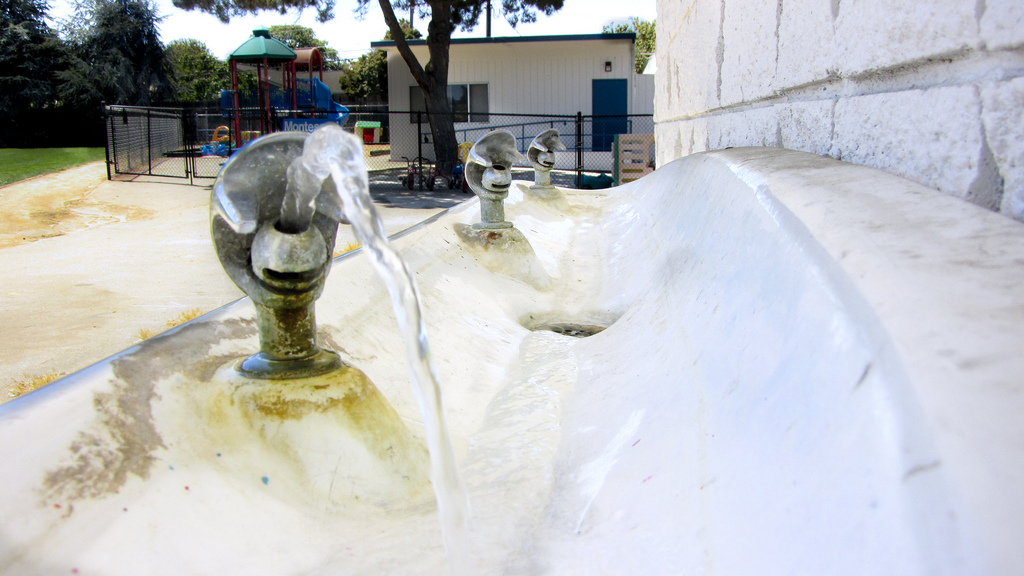First it was Flint, and now it’s Detroit. The public schools in Flint, Michigan, may now have safe drinking water, but the faucets have been turned off in Detroit since the beginning of the school year.
The New York Times reports:
The water fountains in all 106 schools run by the Detroit Public Schools Community District have been dry since classes began in August. The superintendent ordered them shut off as a pre-emptive measure, after testing revealed elevated levels of copper and lead in drinking water at some schools. After completing checks at 86 of the schools last month, officials announced that 57 of them had lead or copper levels above the federal thresholds that require action to be taken.
It’s a pretty frightening scenario for many residents of Detroit — a city just 60 miles southeast of Flint, where residents kept getting sick in 2016, even though officials insisted that the drinking water was just fine. In fact, the Flint crisis was what prompted Detroit officials to begin testing their school water supplies in the first place.
“In the poorer neighborhoods, in the black neighborhoods, we always have a problem with issues of environment,” said Detroit resident Ricky Rice, who has a grandson in sixth grade and another grandchild beginning kindergarten. “Look at the water up in Flint. Now, look at the water here. They should have known it was going to be a problem with this old infrastructure.”
And yet Detroit is far from the only school district to have problems with water quality. At the beginning of this school year, several Maryland school districts also found lead in their drinking water and turned off their water fountains.
Even more horrifying: Water fountains at most of the schools in the Baltimore City district have been turned off for more than a decade, due to worries about lead and copper contamination. Why hasn’t anyone done anything about this problem?
The Detroit Press gives this rundown on school districts around the country dealing with water issues:
- The nation’s 14th largest school district, Maryland’s Montgomery County Public Schools, is being forced to replace hundreds of fixtures after finding elevated levels of lead earlier this year.
- In Indiana 915 schools were tested recently in a statewide sampling program. Elevated levels of lead were found in 61 percent of the schools.
- High levels of lead are an ongoing problem in New York City schools, and in communities around the country including Hillsborough County in Florida.
- On a positive note, since the beginning of the school year in Portland Public Schools, students have been able to safely drink from water fountains for the first time in two years. Back in 2016, 99 percent of the schools were discovered to have elevated levels of lead in at least one water fixture.
As a public school teacher, I’m ashamed that I didn’t know this before — but here’s what really wrong:
“No federal law requires testing of drinking water for lead in schools that receive water from public water systems, although these systems are regulated by the EPA,” the Government Accountability Office reported in a 2017 survey. “Lead can leach into water from plumbing materials inside a school.”
Why on earth is there no nationwide requirement for water testing in schools?
Angry, shocked, overwhelmed? Take action: Support independent media.
We’ve borne witness to a chaotic first few months in Trump’s presidency.
Over the last months, each executive order has delivered shock and bewilderment — a core part of a strategy to make the right-wing turn feel inevitable and overwhelming. But, as organizer Sandra Avalos implored us to remember in Truthout last November, “Together, we are more powerful than Trump.”
Indeed, the Trump administration is pushing through executive orders, but — as we’ve reported at Truthout — many are in legal limbo and face court challenges from unions and civil rights groups. Efforts to quash anti-racist teaching and DEI programs are stalled by education faculty, staff, and students refusing to comply. And communities across the country are coming together to raise the alarm on ICE raids, inform neighbors of their civil rights, and protect each other in moving shows of solidarity.
It will be a long fight ahead. And as nonprofit movement media, Truthout plans to be there documenting and uplifting resistance.
As we undertake this life-sustaining work, we appeal for your support. Please, if you find value in what we do, join our community of sustainers by making a monthly or one-time gift.
